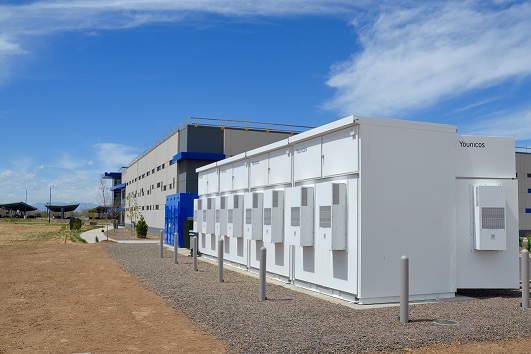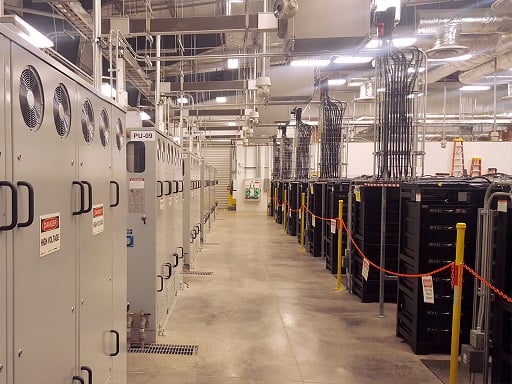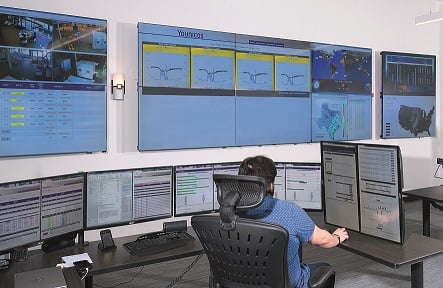
Stephen Prince, President and CEO of Younicos, is a transaction-oriented executive with more than 25 years of experience of growing and leading companies in global markets, as well as a published author and speaker with numerous industry awards. Stephen holds an M.S. in Taxation from Golden Gate University and a B.A. in Business Administration and Accounting from California State University Fullerton.
Can you give us the hottest trends in energy storage?
Enjoy 12 months of exclusive analysis
- Regular insight and analysis of the industry’s biggest developments
- In-depth interviews with the industry’s leading figures
- Annual digital subscription to the PV Tech Power journal
- Discounts on Solar Media’s portfolio of events, in-person and virtual
As is often the case in energy and engineering, things that at a first glance seem unexciting are really far sexier upon closer inspection. In storage right now we see three such ostensibly inconspicuous, but actually quite hot trends: commercial and industrial (C&I) use cases, software and value/revenue-stacking. Taken together, it becomes really exciting: With the right software batteries can really tap into their ‘Swiss army knife’ versatility which enables them to combine various values and revenue streams for C&I applications.
How is storage beneficial for C&I customers?
As I said, the Swiss army knife versatility of storage enables C&I users to stack various values and revenue streams through provision of multiple services. The ‘base case’ typically revolves around optimising energy procurement by reducing connection and peak energy charges. If C&I users deploy storage in conjunction with solar, our battery systems will also help them optimise self-consumption and synch it with both their own energy demand and opportunities on the grid. On top of that, C&I users can leverage their new asset to tap into various revenue streams – from provision of ancillary services to participation in capacity markets. Finally, storage benefits sensitive manufacturing processes by protecting them from sudden changes in voltage or frequency; it can also replace other, single-purpose, non-revenue-generating protective equipment.
What are some of the key factors in executing a successful storage project today?
The right software and project experience. Energy storage is a new field and still attracts many newcomers – which is great. However different batteries behave differently under altered circumstances. There are a number of excellent manufacturers, yes. But a specific cell may be ideal for a specific application – yet entirely unsuited for another. Knowing when to choose which one is still only half the battle. It’s also crucial to have the right software to ensure that the storage system actually provides all these different services and applications – often in parallel.

What are Younicos’ latest projects?
We recently commissioned a ground-breaking multi-purpose C&I, solar-plus-storage microgrid in Denver – and we will soon be announcing completion of a number of other C&I projects. We’re also in the process of completing a 49 MW installation for Centrica, which will put us over 200 MW of storage deployed.
Is energy storage poised for a boom similar to that seen in solar PV over the past 10 years, or will the dynamics be different?
It’s still early days in the global energy transition. We have started, yes, but the opportunities are so huge that we believe both solar and storage will continue to grow by orders of magnitude for years. But whereas the original growth of solar was driven by feed-in tariffs (FITs), storage markets are now evolving organically – not least because the FITs were so spectacularly successful in jump-starting the scale up of a disruptive technology.
How important are standardised products such as Y.Cube, which offer a ‘plug-and-play’ solution, in creating a mainstream energy storage industry?
As the industry matures and small-to-mid-size C&I use cases for storage become attractive, we feel it’s important to have standardised solutions. That’s why we took our decade of pioneering experience and effectively fused it into the hardware of the Y.Cube – which is then furnished with project-need-specific cells, giving us just the right mix of standardisation and flexibility.
Are there technical differences in developing projects for grid, off-grid and hybrid situations?
First of all, with the trend towards value-stacking the lines between on- and off-grid are increasingly blurring. From a technical point of view, ‘pure-play’ frequency response is certainly one of the easier used cases. Even there, maximising the lifetime of the asset can be complex – though it will pay off. On the other side of the spectrum, multi-megawatt grid-forming microgrid systems, such as the ground-breaking solution we’re currently commissioning on the island of Graciosa, require much more advanced capabilities.

What are some of the key benefits of PV-plus-storage?
Well, most obviously, storage turns clean, but intermittent, solar power into a dispatchable energy source. Interestingly, even comparatively small amounts of storage can significantly increase the value of solar assets by helping IPPs market it much more effectively.
Energy is often sold in half-hour or hourly blocks on a day-ahead basis. Increasingly precise ‘energy weather’ forecasts already give IPPs a reasonable amount of certainty over average available energy during those windows. But even the best models will never be able to precisely predict intermittency due to short-term cloud cover – which is exactly the zero-lead time adjustment that batteries provide.
And since the sun doesn’t shine around the clock, battery systems can be used for many other applications that provide additional income streams.
What were the reasons for developing your 24/7 monitoring station in the US?
It enables us to provide customers with additional value by monitoring their sites remotely from one dedicated facility. This way we can collect and analyse important data effectively: How are the batteries doing? What is the temperature? How often does the system have to be recharged? That puts both us and the customer in a position to further optimise a system while it is in operation. We also offer remote maintenance – for example, by installing software updates. Of course, we also provide on-site maintenance with all of our installations, visiting once a year and checking everything that involves hardware.
Is it getting easier to find and finance potential energy storage projects as the market matures?
Financial institutions are beginning to understand storage – and the different revenue streams it can provide. In this regard, our pioneering efforts have paid off. There is still room for better financing conditions, but we expect terms to continue to improve as more financial players compete for projects.
Download Younicos' free whitepaper “A portfolio microgrid in Denver, Colorado“, a detailed case study, here.
Meet Younicos at EES Europe/Intersolar! Hall B1 Booth 286


